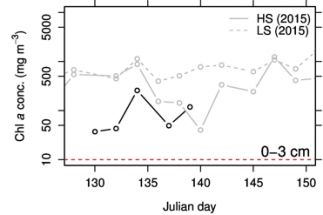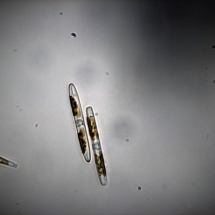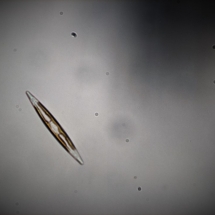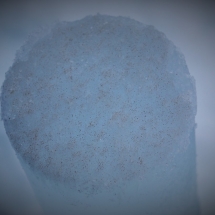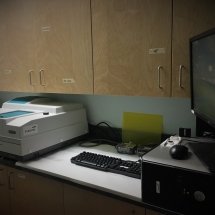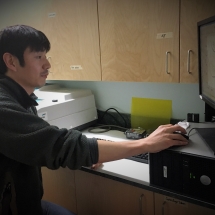Phytoplankton is active in the water column
Ice algae don’t need much light to photosynthesize and grow.
It’s spring in Qikiqtarjuaq. During my three week stay here, one of the most obvious changes in the environment is rapid snow and ice melt. This change is important for flowering in biota (and thus in all ecosystems) because the sunlight becomes more available for organisms at the base of the ecosystem which harvest it.
The results of this year show a slight decrease in chlorophyll a contents compared to those of last year, but there is an increase in biomass.
Phytoplankton activity was measured at depth between 1.5 m and 5 m
Despite the very low light in the water column, we have observed clear peaks of optical properties that are related to phytoplankton activity at depth between 1.5 m and 5 m (Figure 3).
Although it’s too early to conclude what’s happening in the water column, these peaks imply that phytoplankton is active in the water column, suggesting that the bloom of the ice algae and phytoplankton might be coming soon.
Contributors: Anita Lebaron, Guislain Bécu, Laurent Oziel, Marie-Hélène Forget, Annick Bricaud, and Marcel Babin
